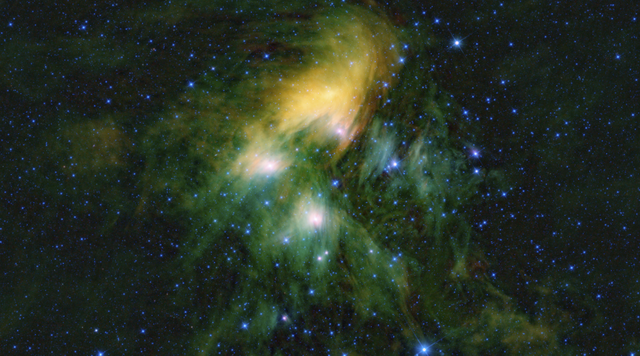Kepler admires the star dancers in the Pleiades

The stars of the Pleiades cluster, like cosmic ballerinas revolve. But these celestial dancers rotate at different speeds. Astronomers have long wondered what determines the speed of rotation of these stars. Watching these star dancers, NASA's Kepler Space Telescope during a mission K2 amassed the most comprehensive catalog of images, which illustrate the rotation periods of stars in the cluster. This information may help astronomers to get an idea of how and where planets form around these stars, and how these stars evolve. "We hope that by comparing our results with information about other star clusters, we learn more about the relationship between the mass of the star, its age, and even the history of its solar system / solar system", - explained Luisa Rebull, a center researcher IPAC Caltech Institute in Pasadena, California. The Pleiades star cluster is one of the closest and most easily observed star clusters located at a distance of 445 light years from Earth. At the age of 125 million years, the star - known individually as the Pleiades - the star reached the age of "adolescence". At this stage of his life, the stars probably orbit faster than they ever will. When an ordinary star is entering into adulthood, it loses a certain amount of matter because of the abundant emission of charged particles; this stream is known as a stellar wind (in our solar system, we call it the solar wind). Charged particles pass along the magnetic field of the star, which slows down the speed of rotation of the star. Rebull and her colleagues tried to find out about more than the dynamics of the rotation of stars using the Kepler satellite. Given its wide field of view of the sky, Kepler observed about 1,000 stars in the cluster of the Pleiades for 72 days. Telescope measured the rotational speed of more than 750 stars in the cluster, including about 500 with the lowest weight, tiny size, whose momentum previously could not even be detected by ground-based instruments. During the observation of the stars of the Pleiades, the data began to emerge relatively clear picture: the more massive stars tend to rotate slowly, while the less massive stars, more often, rotate quickly. The periods of rotation and fast, and slow the stars ranged from one day to 11 Earth days. Many low-mass stars, however, make a pirouette in one earth day. (For comparison, our Sun, makes a complete rotation once per 26 days).
Source: http://nasa.ru/